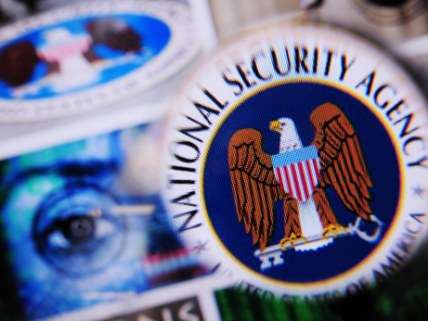Another Reason to Thank Snowden: Increased Federal Surveillance Transparency
More than 150 million phone call records of Americans were collected in 2016.

The National Security Agency (NSA) collected more than 150 million records about the phone calls of Americans in 2016. Believe it or not, this is almost grounds for celebration.
That's because this massive number actually represents a scaling back in the amount of our communications data the NSA has access to. The passage of the USA Freedom Act in 2015 reduced the ability of the NSA to collect phone metadata records on their own, a direct result of Edward Snowden's whistleblowing.
This new report from the Office of the Director of National Intelligence (ODNI) shows the impact. Instead of collecting and storing the phone call metadata records of nearly all Americans, the NSA requested and received 151 million records from providers.
It's important to note that the number refers to the number of records, not individuals, and the circumstances of collecting the records means there may be many redundancies that are nevertheless counted separately. The actual number of Americans whose call records ended up in the custody of the NSA is much lower (and we don't know what it is).
It's also important to note that this particular information and collection of Americans call records is completely separate and unrelated to the announcement from last week that the NSA was ending another type of surveillance that intercepted communications by Americans. The NSA monitored email communications looking for references to foreign individuals targeted for NSA surveillance. The result was that the NSA was able to access and scan the contents of communications by Americans originating domestically without a warrant, which it's not supposed to do. Furthermore it turned out the NSA was often unable to isolate just those particular emails and was incidentally collecting an unrevealed number of completely unrelated communications.
The NSA announced it was ending that particular type of active surveillance. The 151 million number is a different form of data collection, accessing stored metadata records of phone calls. There are a lot of different ways the NSA and the federal government collects data and engages in surveillance, often making it a challenge to fully evaluate trends. This is particularly true given that this is only the fourth annual transparency report released by ODNI. These new transparency reports go all the way back to all of 2014.
So it's sometimes challenging to really determine trends. The report shows that the number of National Security Letters (NSLs) sent by the FBI has declined. NSLs are demands that companies (typically telecoms and internet companies) provide records about targeted customers to assist FBI investigations. These NSLs also have legally enforced gag orders attached keeping the companies from informing the customers and the public. Over the past four years the number of NSLs administered has dropped from 19,212 to 12,150. But we can't truly say that's a decline in the amount of people having their records snooped on because an individual NSL may have multiple names on them and the FBI may send letters to multiple companies looking for the same records. So we know only how many letters were sent, not how many people were affected.
The report does show that the number of foreign targets who are the subject of surveillance orders has increased over the past few years. More than 106,000 non-U.S. people have been the subject of "Section 702" orders in 2016.
Section 702 of the Foreign Intelligence Surveillance Act has been implicated in the incidental surveillance of American citizens and plays a big role in the current political fight over the circumstances through which President Donald Trump's associates were dragged into surveillance of foreign officials. If a perfectly legal target of foreign surveillance communicates with an American citizen who is here on U.S. soil, it becomes a problem given our Fourth Amendment protections from unwarranted searches. The feds have "minimization" procedures to conceal identifying information when Americans get pulled into this surveillance. But as part of investigations, officials can request for names to be unmasked. According to ODNI, in 2016 the NSA disseminated 3,914 reports that contained the identities of United States citizens. The identities of these individuals were initially masked in many reports, but in 1,200 reports names were unmasked and in 1,934 cases, the NSA was subsequently asked by a government official to unmask the identity of a U.S. person.
All of this is to say that there's nothing particularly inherently unusual in former National Security Adviser Susan Rice requesting the unmasking of identities on Trump's team. Trump and Trump supporters present this unmasking as some sort of anomalous outrage, but it happens all the time. Whether this unmasking was politically motivated remains a separate matter, but these numbers should make it clear that government officials regularly attempt to get the names of American citizens mentioned in these surveillance reports.
The question, then, is whether to accept this status quo. Section 702's surveillance authorizations must be renewed this year by Congress or they will expire. Civil rights and privacy activists want better protections to keep the federal government from sharing this information secretly gathered without warrants and being used for purposes other than foreign surveillance and national defense.


Show Comments (4)